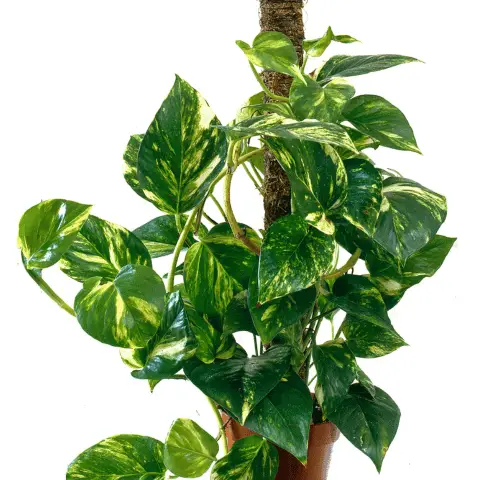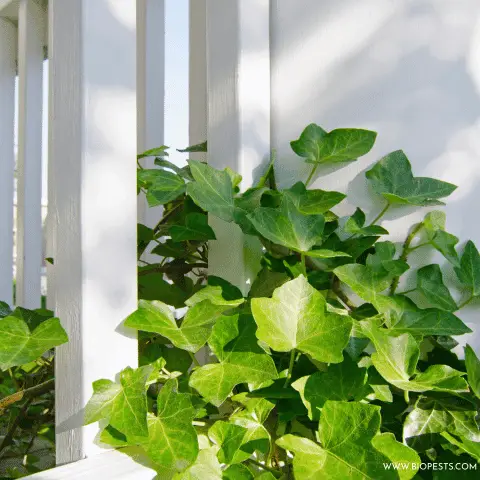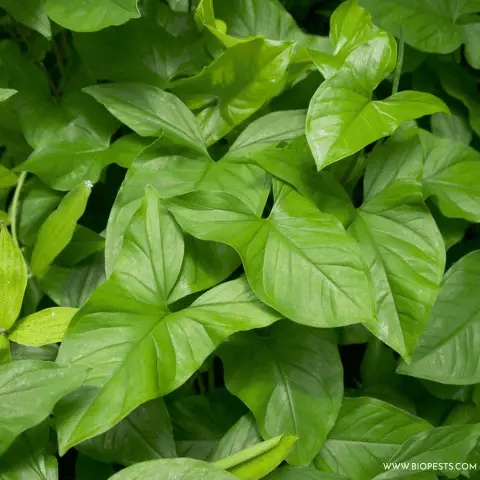With the current trend of going green and the importance of nature in our lives, more people are turning to indoor gardening and home ecosystems. Growing vines indoors is one of the best and most efficient ways to beautify your space with green plants. Indoor vines are easy to manage, adaptable, and offer a range of benefits. In this article, we will highlight the top advantages and disadvantages of growing indoor vines.
What are the advantages of indoor climbing vines?
Indoor climbing vines add an element of natural beauty and can serve as a therapeutic source for those who love gardening. Let’s take a look at the advantages of having indoor climbing vines:
Aesthetic Appeal
This is undeniable: indoor vines are a must-have for stunning home design! Indoor vines can be used to add a touch of natural beauty and aesthetic appeal to your living space. You can choose from a wide range of indoor vines that are both visually appealing and easy to grow. Vines can be trained to fit the design of your home and can be mixed and matched with other indoor plants to create an indoor jungle. There is an indoor vine species for every taste and style, from the vibrant and colorful spider plant to the lush, trailing pothos.

Easier Maintenance
Growing vines indoors means you have more control over their maintenance. Unlike outdoor plants, indoor vines aren’t exposed to the harsh outdoor elements, which can limit their growth rate. They are in a protected environment with indoor vines where they can grow faster and thrive better. Additionally, you control the humidity, temperature, and soil quality, ensuring that your vines grow healthily. Indoor vines require minimal work, less watering, and less pruning, making gardening a breeze.
Soil Quality Control
Growing vines indoors also allows you to control the soil quality, which is crucial to your plant’s growth and overall health. Outdoor soils can be affected by many environmental factors, soil-borne diseases, and pests. However, with indoor gardening, you can control the type of soil your plant grows in, ensuring it has the right pH and enough nutrients to suit your plant’s needs. With proper soil quality, your indoor vines will grow healthy and strong, and you will have better yields.
Privacy
Indoor vines can also be used to provide privacy in your home. Rather than using traditional curtains or blinds to block out your neighbors’ view, indoor vines can provide an attractive living wall that creates an ultra-private space within your house. Training a climbing vine up a trellis or using a hanging planter filled with ivy or some other dense vine species is a smart way of introducing some greenery, shade, and privacy into your home.
Improved Air Quality
Studies have shown that indoor plants can help improve the air quality within your home. Indoor vines effectively reduce carbon dioxide, remove pollutants from the air, and increase humidity, leading to healthier lungs and breathing. These five indoor vines are known to improve air quality:
- Devil’s Ivy: Also known as pothos, devil’s ivy is one of the most popular indoor vines. It’s easy to grow and requires minimal maintenance, making it an ideal choice for beginners. It removes formaldehyde, benzene, and xylene from the air, making it the perfect plant for homes and offices.

- English Ivy: English ivy is particularly effective at removing airborne mold spores, which can cause allergies and respiratory problems. It’s also easy to grow and can thrive in low-light conditions.
- Spider Plant: The spider plant is a favorite among air-purifying indoor plants. It effectively removes formaldehyde and xylene from the air and is easy to maintain. It also produces little plantlets that can be propagated to create new plants.
- Golden Pothos: Golden pothos is another member of the pothos family known to be one of the easiest indoor plants to grow. It effectively removes formaldehyde from the air and can thrive in low-light conditions. It’s also great at adding a pop of color to any room with its bright, golden leaves.
- Philodendron: This is a popular indoor plant that’s known for its heart-shaped leaves. There are many types of philodendrons, but most are excellent at removing formaldehyde from the air. They prefer bright, indirect light and moderately moist soil.

What are the Disadvantages of Growing Indoor Climbing Vines?
Indoor climbing vines are a great way to add greenery and natural beauty to your home decor. These plants are easy to care for and transform any room into a lush oasis. However, despite their many benefits, there are also some potential drawbacks. Let’s see together what are the disadvantages of growing indoor climbing vines and how to overcome them.
Space
One of the biggest challenges of growing indoor climbing vines is that they require a lot of space. These plants can grow several feet long and need much room to spread out. If you have a small home or apartment, finding a suitable location for your climbing vines may be difficult. Additionally, these plants can be quite heavy, so you may need to install additional support systems to keep them upright
Set Up And Maintenance
Indoor climbing vines require regular maintenance to keep them healthy and looking their best. This includes watering them on a regular basis, pruning them to prevent overgrowth, and providing them with proper lighting and ventilation. If you are unwilling to commit the time and effort required to care for your climbing vines, they may not thrive and could eventually die.
Before choosing any indoor vine, it’s essential to do your research and choose the right variety for your home’s environment. Ensure the plant and its climbing path suit the indoor environment and structure. Climbing plants usually grow towards light and require a sturdy and robust structure to support their growth.
Providing the right support is key to their survival. Using poles, sticks, or trellises can allow the plant to grow upwards or on walls. Ensure that the support is sturdy enough to support the plant’s weight and that it can cope with changes in humidity and temperature.
Light Requirements:
Growing indoor climbing vines is not as simple as just plopping them into a pot and watering them every now and then. These plants have specific light requirements that differ from growing them outdoors. Your vine might suffer from the following:
- Insufficient Light
Insufficient light is one of the most common problems when growing indoor climbing vines. A lack of sunlight can cause your plant to grow slowly, pale, and develop weak stems, which leads to stunted plant growth. If you have your plant located in a location with low light levels, such as a room without windows, or live in a region with low light conditions, you may need to supplement the light. Consider using grow lights to provide your plant with sufficient light, and always ensure they are placed at the same level the plant is grown. Remember that indoor climbing vines require at least 6 hours of sunlight daily to thrive. - Poor Light Quality
Even if your indoor climbing vine is in a room that receives ample sunlight, it’s still possible for the light to be low-quality, which is another common problem. Poor light quality occurs when you aren’t providing your plant with the correct amount of light on the color spectrum. This can cause weaker foliage and interfere with the production of chlorophyll, which is key for the growth of many plants. One way to resolve this issue is by moving your plant to a different spot where it can absorb the correct light spectrum, or by investing in full-spectrum grow lights. - Too Much Light
While most indoor climbing vines require plenty of light to survive, too much light can also prove detrimental. Too much light can cause your plant to wilt, dry up, and die. Direct sunlight or harsh artificial light can burn your plant’s leaves, creating brown spots on the foliage. To prevent this from happening, provide your plant with partial shade during the hottest times of the day or by investing in sheer blinds, which help to block harmful UV rays. - Inconsistent Light
Consistent exposure to light is vital for indoor climbing vines. When grow lights are placed too far from your plant, the plant will not receive adequate light to grow and mature. Conversely, if the grow lights are too close to your plant, it can end up getting too hot, damaging the plant and interfering with its growth. Inconsistent light means that your plant may grow in a lopsided, unbalanced manner, and this can be a sign of an unhealthy plant. Ensure that the grow lights are at the appropriate distance from your plant while providing consistent light. - Poor light spot selection
The location of your indoor climbing vine is crucial in determining whether your plants grow healthily or not. It’s imperative to choose a spot where the plant can receive enough light. Choosing the wrong spot can lead to the plant’s poor growth, weaken the stems, and cause the leaves to turn yellow. Always ensure that the plant receives enough light by placing it near a window or grow lights. If you’re unsure, consult a gardening professional to help select the appropriate spot.

Pests and Diseases
Like all plants, indoor climbing vines are susceptible to pests and diseases. Common issues include spider mites, mealybugs, and powdery mildew. If you notice any signs of pest or disease infestation, it is important to act quickly to prevent it from spreading and causing permanent damage to your climbing vines. Check out my article on battling those annoying pests using all-natural solutions!
Safety
Climbing vines can be beautiful, but they can also be hazardous if not properly cared for. These plants can become tangled and pose a tripping hazard if left unchecked. Additionally, some climbing vines can be toxic to pets and children if ingested, so keeping them out of reach is important.

Potting and Repotting
Another disadvantage of growing indoor climbing vines is that they require proper potting and repotting procedures to ensure they stay healthy. If you do not use the right mix of soil and fertilizer, or if you do not repot your vines when needed, they may not grow as well as they should. Repotting can also be a messy process that can damage the plant if not done correctly.
Conclusion
Growing indoor climbing vines can be a rewarding and enjoyable experience, but it is important to remember that there are also some potential disadvantages. These plants require a lot of space, maintenance, and proper care to thrive, and they can be susceptible to pests, diseases, and safety hazards. However, with the right knowledge and preparation, you can overcome these challenges and enjoy the many benefits of having a lush, green indoor oasis.
Some of the links above are affiliate links, meaning at no additional cost to you, I will earn a commission if you click through and make a purchase.

